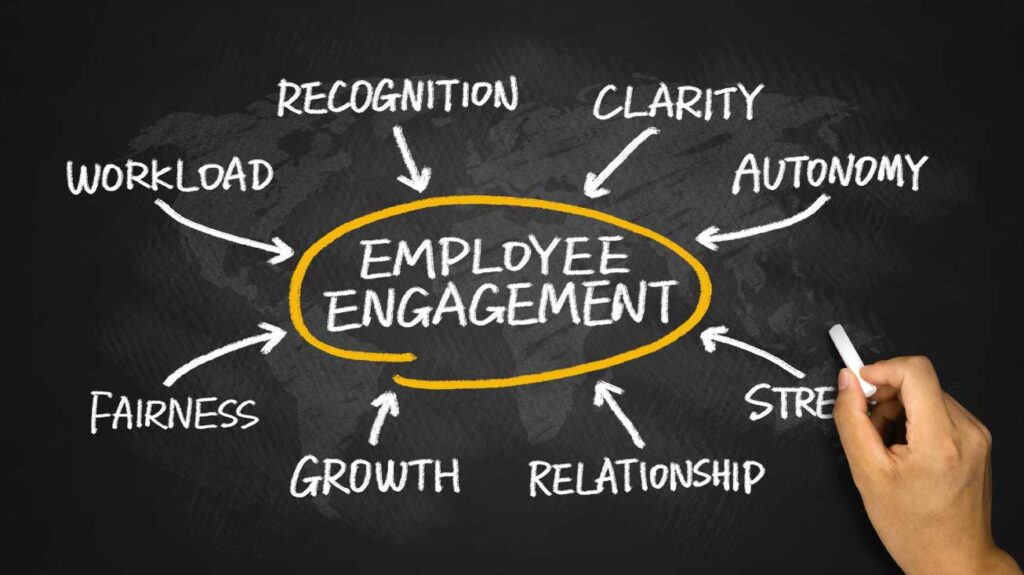
You will learn about methods of optimizing the work process in a remote environment from this article.It seemed that the peak of remote work would happen in 10-15 years, and the transition to remote work would be smooth. After all, some of us like to work in an office and be in constant live contact with our colleagues, while others find it convenient to use co-working spaces close to home.
There are also many who want to perform work tasks in a quiet home environment without distractions. However, the spread of the virus has made its mark on the economy and influenced the mandatory mass shift of companies to remote work. The key factor here is the word “mandatory.” In an ideal world, where the development of the labor market and HR sphere would be progressive, the employee would choose to move to a remote office or not, or the decision to move to the home office would be made collectively by all employees of the organization. The current problem is that we all simply do not have a choice.
We have to adjust. Both the average employee and the head of the company. It follows that already now we need to use different methods to maintain the productivity of the work process, because not everyone is excited about the idea of working at home and it is their motivation that needs to be recharged.
China is the country with the highest economic growth rate, and it is home to the world’s largest corporations. China survived the peak of the disaster faster than any other country and suffered the least possible losses under such harsh conditions. Large companies from Alibaba to Ping An, from Google to Ford have moved employees to remote locations and managed to achieve positive results in this task. Their experience has allowed us to gather the most effective ways to optimize work processes, adapt employees and increase their productivity in the new work environment. The following methods will help reduce possible losses for the business in the transition to telecommuting:
- Setting up a workplace at home;
- Formation of a new system of team functioning;
- Selection of the most optimal communication tools;
- Remote determination of employee performance;
- Positive Management Practices.
Set up a comfortable workspace at home and ask employees to do so

Effective remote work begins with a comfortable workplace. Uncomfortable desk, chair, lack of specialized software, poor quality of Internet connection – all this will negatively affect the productivity of your work at home. You will get tired quickly, your neck and back will get stiff, you will get nervous because the file with important data is not sent to your colleagues because your Internet connection is failing.
To be productive and prevent quick fatigue, you should take care of your home office setup. A comfortable desk and chair will really allow you to do your work better and faster. So first of all – take care of yourself, we often forget about it.
Here are a few other important elements, the presence of which increases the efficiency at a remote site:

- Stable high-speed Internet connection;
- Extension of access and bandwidth of the corporate VPN (virtual private network);
- Access of employees to software or purchase of special programs that help them work remotely;
- Transition to online documentation and the use of messengers.
Conclusion
You need to take care of the basics of effective work at home. Make the team aware that setting up a home office is the most important step toward a psychologically comfortable work environment. If you have the ability to install different software without security approvals, then this is the best time to try different paid and free tools to optimize work.
Monitask can cover most of the issues of remote work process, from basic time tracking to advanced project management But don’t forget to google information about them before you install them. Almost everyone knows a rather unpleasant situation with a really good service Zoom
Form a new system of team functioning

The dramatic change in the work environment has noticeably affected the performance of entire divisions of large companies. The main factors in the decline of employees’ KPIs:
- Isolation has led to uncertainty about team interaction.
- Work processes are paralyzed by the lack of organization in the actions of the team.
- Employees try to complete tasks, but chaotic and lack of coherence leads to negative results.
Employees are fired because they do not return calls on time, because management does not understand how to measure their productivity. Management uses systems of total control, not realizing that this approach worsens the already low motivation of employees. This reduces productivity, delays completion of tasks, and increases misunderstandings among employees.
The main reason for micromanagement is mistrust, which arises from the lack of communication between the employee and the manager. Companies need to move from control to constant communication. This helps create a transparent and trusting relationship. Daily messaging allows you to understand the state of the employees and manager, identify major communication difficulties, and resolve conflicts.
There is another effective method of solving this problem. In Chinese companies, management formed small cross-functional groups of employees, each with its own list of tasks and algorithms to solve them. At Ping An Insurance, China’s largest insurance company, employees were grouped into project teams of no more than 30 members. The result was increased productivity throughout the organization, and the technique has become a popular teamwork tool. And here’s why:
- Each group has its own list of goals and objectives, as well as all the necessary means to achieve the result.
- All teams are staffed with the minimum possible number of participants, so it’s easier to manage them than all the employees of the company at once.
- Top managers and executives remain detached to oversee work processes from the outside and to assist in top-level decision-making.
Conclusion
Constant communication and the creation of separate cross-functional teams with clearly defined tasks and goals – keeps employees on the same strategic course.
Choose the best communication tools

If previously it was possible to walk a couple of meters to a colleague’s desk to discuss current work matters, now communication must be carried out in other ways. The lack of an approved set of communication channels between employees leads to a delay in the execution of tasks and a drop in efficiency. This can also include the risk of leakage of confidential information. After all, the first method of sending files can be insecure and lead to dire consequences.
Let’s identify the types of tasks for which certain types of communications are intended:
- 1:1 telephone conversation – individual meetings and building working relationships. Discussing sensitive and difficult topics.
- Videoconferencing – collaborative discussion and problem solving using a common screen or whiteboard with a workspace. Planning. Seminars and trainings. Collective conversations and joint “debriefing”.
- Chat – urgent questions and prompt help from the management. Quick notification about the status of tasks.
- Video and voice messages – explaining the details of the work. Prompt and detailed notification of changes in the algorithm of the task. Try to use this type of communication as little as possible. It is better to write a detailed message.
- Email – important but non-urgent alerts for large teams. External and internal formal employee communication.
Conclusion
Determine which software will be most effective for one method of communication or another. Make a list of programs and their corresponding types and occasions for corporate communication. Give this list to your employees. You now have the technology for intra-team communication that will form the basis for effective communication between employees.
Determine employee performance remotely

The sudden change from the office work environment to the home one reduces the productivity of any even the most well-coordinated team. Large companies in China, in the context of the mass transition to a remote system, began to conduct regular short surveys of employees in order to identify current and honest opinions about the work process, colleagues, the company, and everything related to it.
Statistical data on workflow metrics provided the groundwork for work on mistakes. This increased efficiency and the remote employee’s utility ratio by 20 percent or more in the first month.
Conclusion
With remote surveys you can remotely monitor the effectiveness of tasks, increase productivity and build a healthy microclimate in the team.
Use positive management practices

Managing people is one of the most complex and demanding elements of remote work. The efficiency of employees decreases dramatically and there are many reasons for this:
- A negative reaction to a sudden change in the work environment.
- Lack of self-organization and motivation at home.
- Poor concentration inherent in working in a home environment.
A healthy person = a healthy organization. Use leadership competencies to increase employee motivation and guide the team to overcome challenges together. When managing in a remote work environment, become a reliable and trustworthy source of information.
Good and confident speeches announcing positive perspectives can have a powerful effect on motivating the entire organization. Encourage employees to communicate openly, honestly, and productively. It’s what helps you get through any crisis.
Conclusion
In times of crisis, good communication with employees is important. Set an example with your determination to achieve your goals. Think through what you want to say to the team to increase engagement and commitment. Say it clearly and confidently.
Conclusion

Arm yourself with a set of solutions and techniques proven to be effective. Solve the following problems:
- Increase the motivation of employees working remotely.
- Improve employee productivity with surveys.
- Accelerate your adaptation to the current crisis conditions and bring a positive charge to your employees.
Successful leaders proactively identify best practices and quickly create mechanisms to apply them within their organizations. Find new ways to increase performance and discard the ones that don’t work. Only with progress and innovative technology can we survive times of crisis and rebuild the economy.













